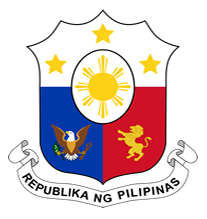Philippines: Government
Key Figures
- Chief of State:
- President Rodrigo Duterte; Vice President Leni Robredo
- Head of Government:
- President Rodrigo Duterte; Vice President Leni Robredo
Overview
- Government Name:
- Republic of the Philippines
- Constitution:
- Adopted: 1987. Details the structure of the three branches of government and discusses topics such as citizenship, suffrage, local government, social justice, and human rights, and the family, among others.
- Government Type:
- Republic

Index of Economic Freedom
Country Risk Rating
Government Branches
| Main Powers | Election Process | Election Cycle 1 | |
|---|---|---|---|
| Executive | President is main source of executive power, although most of his power is delegated to a cabinet, and also is the commander in chief. |
President elected by plurality vote and vice president by plurality vote on a separate ballot from the president. |
6 years |
| Judicial | Settle actual controversies involving rights which are legally demandable and enforceable. |
President selects judges and justices from nominees given by the Judicial and Bar Council. |
Mandatory retirement age of 70 |
| Legislative | All bills need consent of both houses to be submitted to the president. Congress can override presidential veto with a two-thirds supermajority. Senate has the power to vote upon treaties while the House may only introduce money bills. Additionally the House has the power to impeach while the Senate may try the impeached official. |
Senate members are elected by plurality vote in multi-member constituencies. House of Representatives has 230 members are elected by plurality vote in single-member constituencies and 57 members through a closed-list proportional representation system. |
Senate: 6 years; House of Representatives: 3 years |
Regional Trade Blocs
International Organization Participation [2]
Environmental Agreements [3]
Tax Information [2]
- Tax Authority:
- Department of Finance's Bureau of Internal Revenue
- Tax Name:
- VAT
Sources:
- ElectionGuide http://www.electionguide.org/
- EY, http://www.ey.com
- CIA World Factbook, https://www.cia.gov/the-world-factbook/
- U.S. Bilateral Relations Fact Sheets http://www.state.gov/r/pa/ei/bgn/


